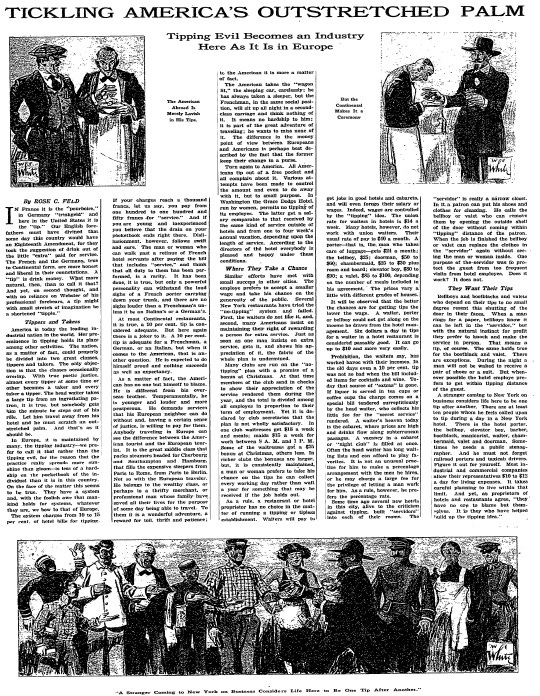Tickling America's Outstretched Palm: Tipping Evil Becomes An Industry Here As It Is In Europe
The U.S. imported the custom of tipping from Europe, but the continent largely abandoned the practice after World War II. So it may be surprising to read this 1925 New York Times Magazine headline about how tipping had become an industry "here, as it is in Europe."
As the journalist Rose C. Feld explained in 1925, though, the standard tipping rate was still higher for Americans:
In Europe, it is maintained by many, the tipping industry... is less of a hardship on the pocketbook of the individual than it is in this country... A 10% tip is adequate for a Frenchman, a German, or an Italian, but when it comes to the American, that is another question.
Why did Europe stop tipping eventually?
The left-leaning national economies of Europe are a relatively recent invention, historically speaking, largely emerging in the post-WWII era. Many European countries began implementing national minimum wages in the ensuing decades. This list of national minimum wage introductions says most of the European nations did so sometime between the 1960s through 1990s.
The U.S. actually beat many of them to it, establishing the first national minimum wage during the Great Depression in 1938. But the European minimum wages are usually higher. That, more than anything else, ended Europe's tipping culture.
I lead historical walking tours by day, at least when the weather is warm enough. (Which it's currently not.) A family from the U.S. south was once part of my tour group. At the end, the father in the family said: "I'll give you a tip." I replied: "Thank you!" He looked at me and said: "Here's your tip... never plant corn in the winter." And then he walked away.
Tickling America's Outstretched Palm: Tipping Evil Becomes An Industry Here As It Is In Europe
Published: Sunday, February 1, 1925


